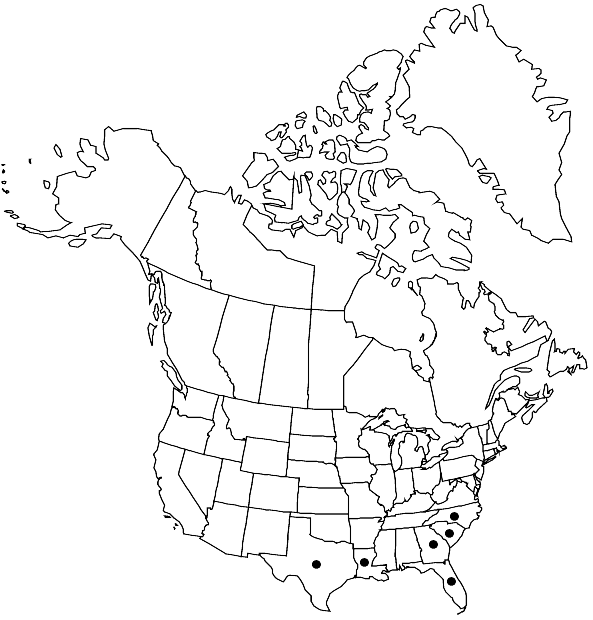Difference between revisions of "Bruchia carolinae"
Bull. Torrey Bot. Club 6: 144. 1877,.
Synonyms: Bruchia ravenelii var. mollis Lesquereux & James
FNA>Volume Importer |
imported>Volume Importer |
||
| (2 intermediate revisions by 2 users not shown) | |||
| Line 49: | Line 49: | ||
|publication year= | |publication year= | ||
|special status= | |special status= | ||
| − | |source xml=https:// | + | |source xml=https://bitbucket.org/aafc-mbb/fna-data-curation/src/2e0870ddd59836b60bcf96646a41e87ea5a5943a/coarse_grained_fna_xml/V27/V27_622.xml |
|genus=Bruchia | |genus=Bruchia | ||
|species=Bruchia carolinae | |species=Bruchia carolinae | ||
Latest revision as of 22:27, 5 November 2020
Distal leaves long-subulate beyond an ovate or obovate base, 1–2.2 mm, leaf base strongly differentiated in shape; distal laminal cells short- to long-rectangular. Sexual condition autoicous. Seta 0.1–0.4 mm. Capsule neck very short, flattened obovate. Spores pitted. Calyptra minutely papillose.
Phenology: Capsules mature late winter–spring.
Habitat: Soil
Elevation: generally low elevations
Distribution

Fla., Ga., La., N.C., S.C., Tex.
Discussion
Bruchia carolinae is one of the smallest species of the genus, and the very short seta and papillose calyptra are diagnostic.
Selected References
None.
Lower Taxa
None.
... more about "Bruchia carolinae"